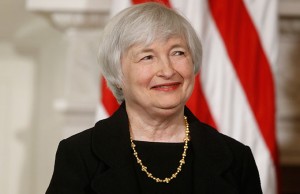
I have just returned from a two-week trip to Hong Kong and Taiwan, just in time for the Federal Reserve’s long-awaited decision to delay the first rate hike since the financial crisis.
The key phrase “Heightened uncertainties abroad,” spoke as loudly as the lack of action, as Fed chairwoman Janet Yellen noted the risks of both China and Emerging Markets in generally spilling over into the United States.
Hedging in the Retirement Risk Zone
For those of us who are in the “Retirement Risk Zone,” — including Yours Truly — the caution behind the Fed’s decision could suggest that for some it may be appropriate to dial down portfolio risks. Since late August, I have followed my personal financial adviser’s recommendation to remain invested but to hedge back one third of US and Canadian equity exposure.
Generally, at whatever age, it makes little sense to take more risk than you need to take and the Fed’s decision (or non-decision) underlines that there are still extensive risks out there, certainly in the equity markets as well as fixed income. Fred Kirby, a fee-for-service planner at Dimensional Investment Planning, says it’s time to be cautious and protect profits. As I quoted him earlier this year, he suggests that those who are averse to market timing can consider the newer “low-volatility” ETFs. For Canadian exposure, he suggests the BMO Low Volatility Canadian Equity ETF (ZLB), which holds 40 stocks deemed to have the lowest risk. For U.S. stocks he likes the BMO Low Volatility US Equity ETF (ZLU), which uses the same methodology and holds 100 companies. For international equities, Kirby likes the iShares MSCI EAFE Minimum Volatility Index ETF (XMI). (There’s also an iShares low-vol ETF for Emerging Markets).
“These ETFs automatically position the cautious investor for any additional future gains without having to make a market-timing re-entry decision,” Kirby says. “This could be just the sort of compromise that lets some investors stick with their investment plans even when they do not want to.”
Actively Managed ETFs
On the same subject (ETFs), my latest Financial Post ETF column ran earlier this week, tackling actively managed ETFs. See Why Fund Investors Should Get Active with their ETFs.
Bear books revisited
While on my semi-vacation, I had the opportunity to peruse a few rather bearish books, notably James Rickards’ recently published The Big Drop, and a new revised fourth edition of AfterShock, which came out in July 2015. The latter, like companion volume The AfterShock Investor, is convinced that all the money printing by global banks around the world means we’re in for an era of rising inflation and ultimately crashes in both stocks and bonds. It therefore prescribes healthy portfolio doses of cash, gold and other defensive measures.
In a new revised edition of the The Demographic Cliff, released in August, Harry Dent Jr.remains convinced we’re in not for inflation but a continued deflationary depression and differs by not sharing the enthusiasm of the gold bugs. For amusement, also check out The Anti-Demographic Cliff, a nod to Dent’s research and which claims the U.S. government is openly propping up the stock market to prevent a second Great Depression (sort of an “Obama put”?).
While most of these books have so far been “wrong,” the authors are stubbornly sticking to their guns and releasing revised editions. You know what they say about stopped clocks being right twice a day.
Then there’s the second edition of Peter Schiff’s The Real Crash, originally published in 2012, which predicts a crash in the U.S. economy and dollar, and advocates holding a mix of quality foreign dividend-paying stocks (not US), cash or short-term bonds and gold.
Rickards sensibly observes that these things are impossible to predict and therefore suggests we should prepare for either inflation or deflation. I point these books out (and there are many more along similar lines) not because I think one author or another has “the answer,” but to suggest there are alternatives to the prevailing cult of equities.
In fact, the more I read these bear books with differing and sometimes contradictory views, the more I see the wisdom of Harry Browne’s old Permanent Portfolio, which advocated an even four-way split of cash, bonds, gold and stocks: stocks for continued prosperity, bonds for deflation, gold for inflation/hyperinflation and cash for recession.
I also refer readers to various recent Hub guest blogs, including Monday’s this week from investment adviser Steve Lowrie: Stop trying to correct for market corrections, and from August 25th, Ben Felix’s blog, Beware the Sales Pitch of Downside Protection.
Political Debates
I was in an airplane while the U.S. presidential debate occurred but if Kelly McParland’s report in the National Post was any indication, I didn’t miss much: see CNN let down viewers by playing GOP debate for cheap slapstick. The second Canadian debate hosted by the Globe & Mail was more edifying. The Globe’s own summary is here: Harper, Mulcair, Trudeau lock horns over sluggish economy. The Globe’s economics reporter, David Parkinson, seemed to think Trudeau was the only candidate with a “new economic vision for Canada.” But National Post columnist John Ivison thought the NDP’s Thomas Mulcair had the edge on points. You can find my tweets/retweets on my Twitter feed but generally agree Thomas Mulcair was the winner. I prefer Harper’s politics but perceived his debate performance as disappointedly wooden.


